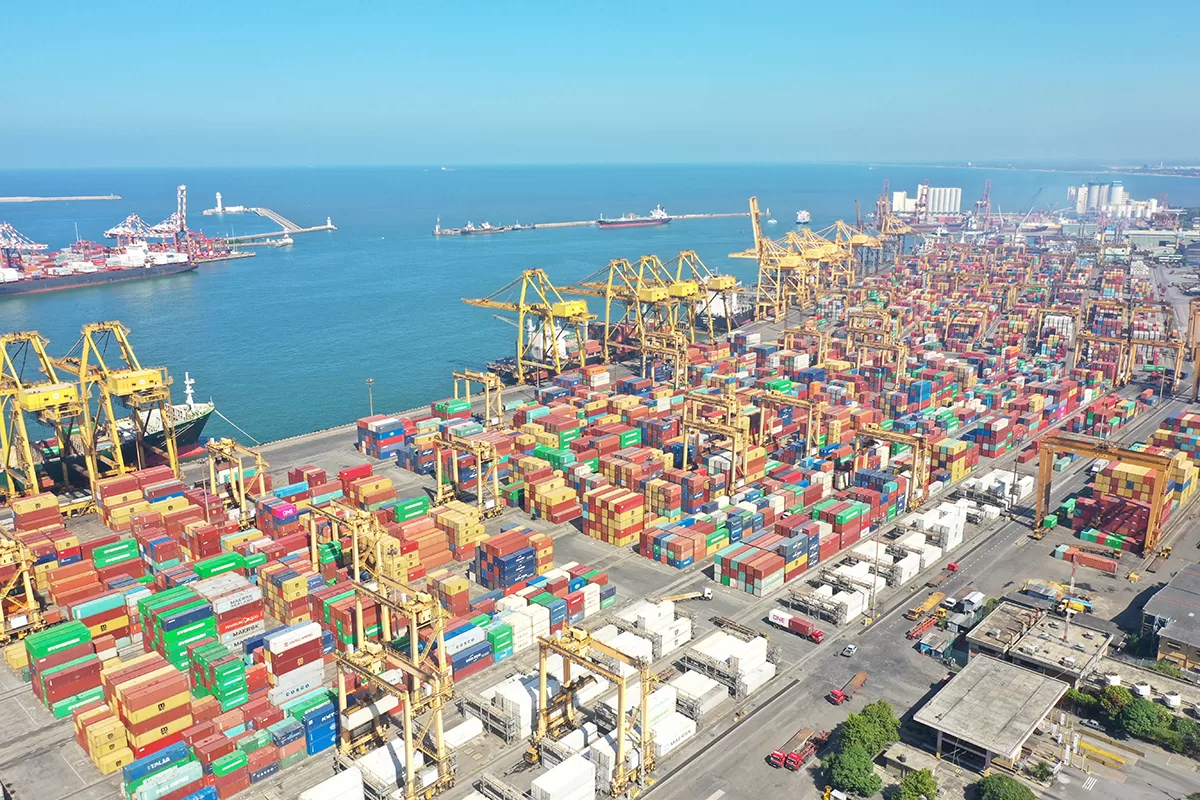Sri Lanka, strategically positioned in the Indian Ocean, is embarking on a transformative journey to expand its pivotal Colombo Port, intending to reinforce its status as a preeminent regional transshipment hub for container traffic. The island nation, serving as a key transit hub for global maritime trade, witnesses nearly half of all container ships navigating through its waters. Against this backdrop, Colombo Port has emerged as the largest and busiest transshipment port in the Indian Ocean, operating at a remarkable capacity of over 90% since the year 2021.
The latest push for expansion involves the phased development of the West Container Terminal, with a consortium led by Adani Ports and Special Economic Zone Ltd (APSEZ) investing approximately $1 billion in this ambitious project. The West Container Terminal is strategically designed to accommodate 3.5 million twenty-foot equivalent units (TEUs) annually, a significant boost to Colombo Port’s overall container handling capacity. The first operational phase of this terminal, featuring an 800-meter berth, is anticipated to commence activities by the window of December 2024 to February 2025. The subsequent phase will witness the addition of another 600 meters of quay, further enhancing the terminal’s capabilities.
However, the vision for Colombo Port’s expansion goes beyond the West Container Terminal. The Sri Lanka Ports Authority (SLPA) is actively pursuing the feasibility study for the West Container Terminal 2 (WCT 2). According to Keith Bernard, Chairman of SLPA, the feasibility study for WCT 2 is currently underway, and the breakwater extension required for its development is expected to be completed by 2028. With an optimistic outlook, WCT 2 could potentially be operational within the next five years. While the project is set to be tendered out, there’s a possibility that the Adani-led consortium, currently involved in the West Container Terminal, may have the option to participate in the tendering process.
Bernard, while expressing the potential for Adani’s continued involvement, mentioned the likelihood of providing the consortium with a mechanism such as a “right of first refusal.” This mechanism would enable Adani to match the highest bid in the global tendering process and secure the WCT 2 contract. Such arrangements are not uncommon in large-scale infrastructure projects, ensuring a balance between encouraging competitive bids and acknowledging the expertise and commitment of existing stakeholders.
Beyond the West Container Terminal initiatives, Sri Lanka has outlined comprehensive plans for the development of the Colombo North Port. This visionary project is currently at the conceptual stage, with the feasibility studies already completed. Lal Weerasinghe, Additional Managing Director of SLPA, described the Colombo North Port development as a “totally private investment” driven project. The expansive North Port is envisioned to include at least four terminals, each catering to diverse cargo handling requirements. The private sector is expected to play a central role in this development through a public-private partnership (PPP) model.
Weerasinghe emphasized the multifaceted nature of the Colombo North Port, envisioning it as a versatile facility accommodating bulk cargo, containers, and potentially even a cruise berth. The substantial area allocated for the North Port offers the opportunity for additional features such as warehousing and logistics centers, seamlessly connected to elevated highways and expressways to ensure convenient access.
While specific details regarding the investment involved in the Colombo North Port development are yet to be finalized, Weerasinghe noted the significance of constructing a breakwater as a pivotal component of the project. The SLPA has undertaken a comprehensive feasibility study and environmental impact assessment to ensure the sustainability and success of this transformative initiative.
These strategic developments are complemented by ongoing projects, such as the construction of the 1,300 meters quay length East Container Terminal (ECT) and the 1,400 meters quay length West Container Terminal. Funded by the port authority, the ECT is anticipated to be completed by the end of 2024 or mid-2025. Simultaneously, the Adani-led consortium is actively working towards completing the construction of the West Container Terminal by the end of 2025. Together, these terminals are expected to add a substantial 7.5 million TEUs to Colombo Port’s overall capacity, reinforcing its significance as a crucial maritime gateway.
These transformative endeavors underscore Sri Lanka’s commitment to enhancing its maritime infrastructure and maintaining its pivotal role in global trade networks. The Colombo Port expansion projects align with the broader goals of bolstering economic growth, facilitating trade, and positioning Sri Lanka as a leading maritime hub in the Indian Ocean region. As these visionary projects progress, Sri Lanka aims to solidify its reputation as a dynamic and resilient player in the ever-evolving landscape of international trade and commerce.





